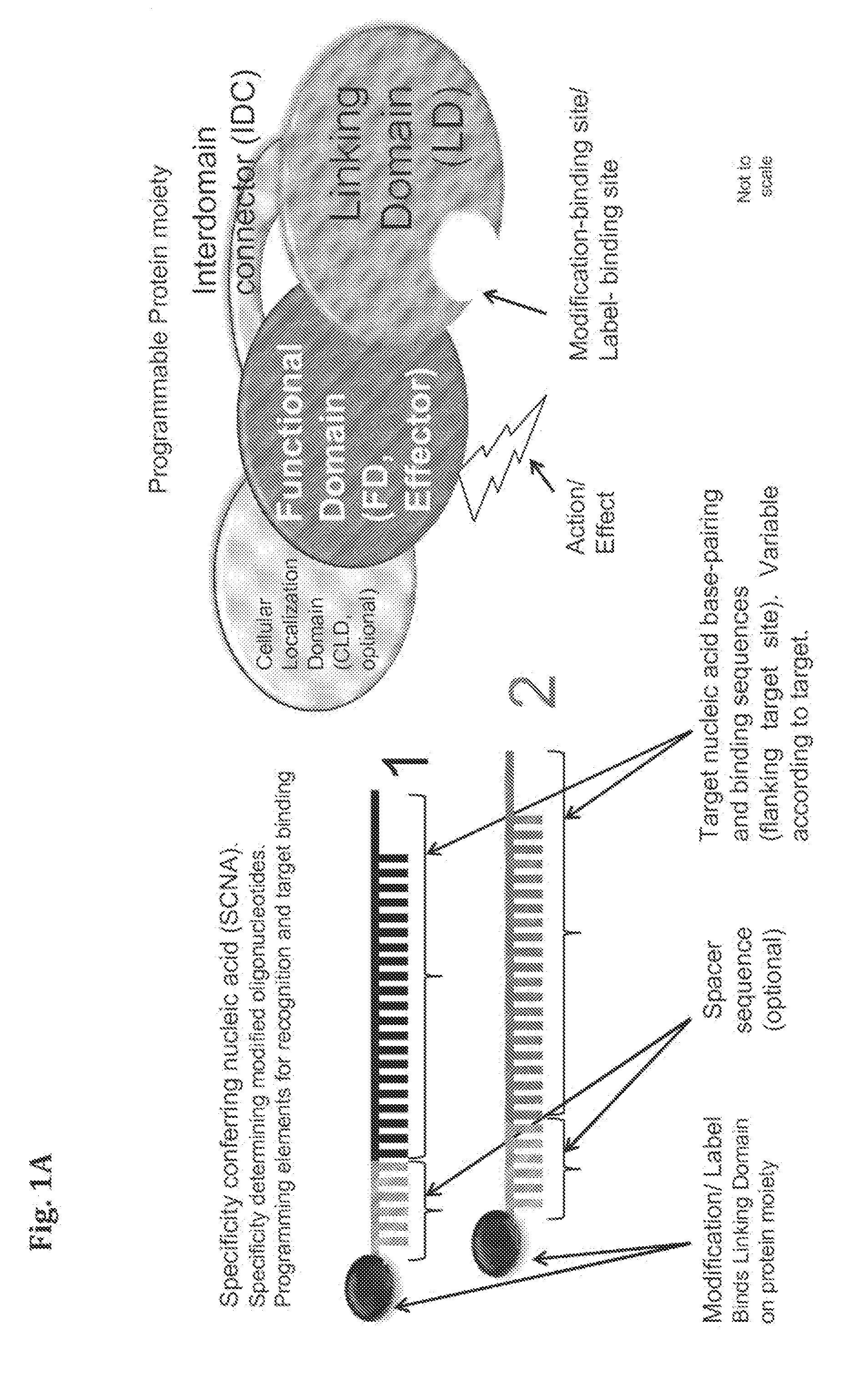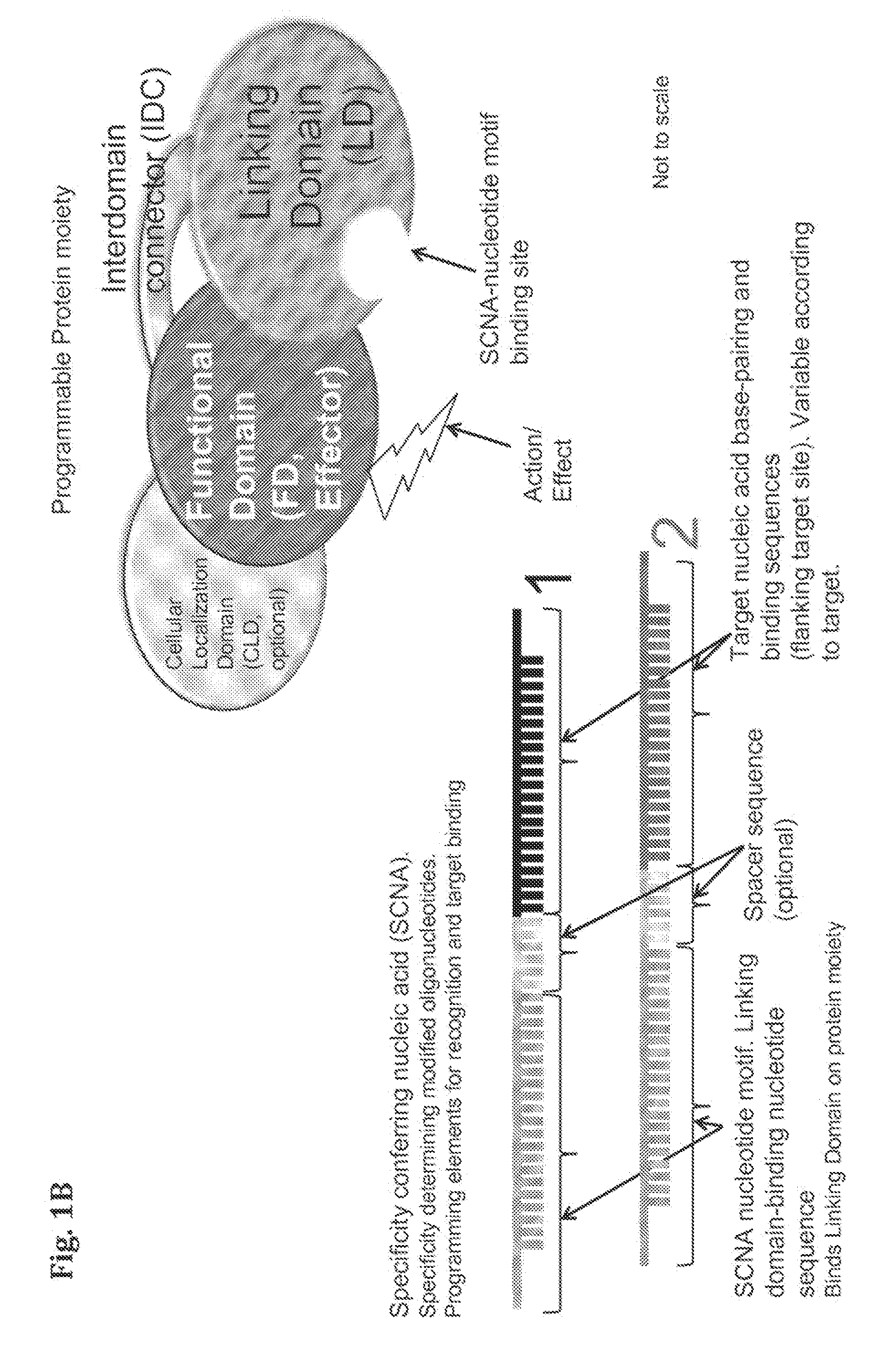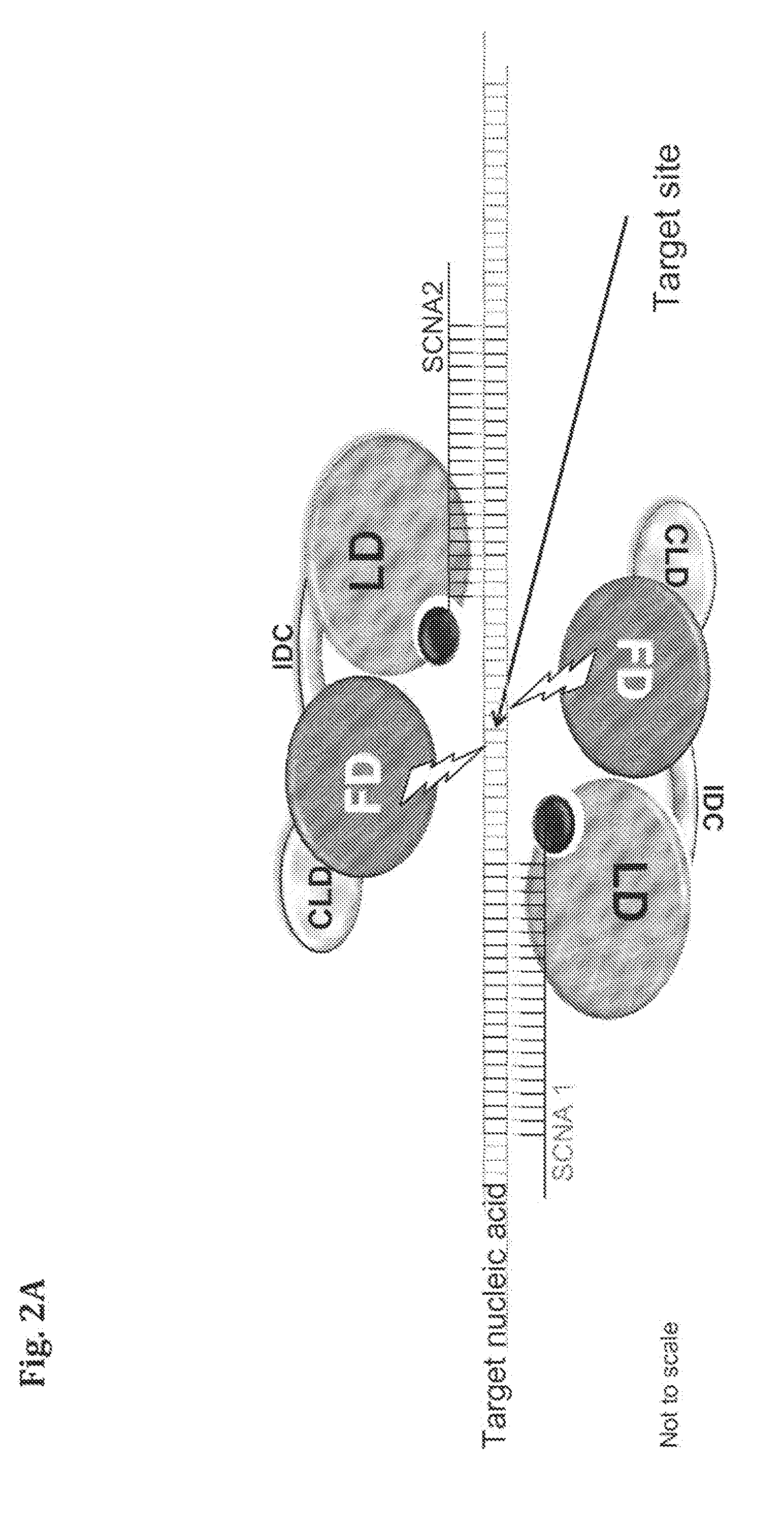Compositions and Methods for Modifying a Predetermined Target Nucleic Acid Sequence
a nucleic acid sequence and sequence technology, applied in the field of compositions and methods for targeting and modifying nucleic acid sequences, can solve the problems of long and laborious need to design and supply a different protein for every desired target sequence, specific mutations, deletions, insertions or replacement events, and a limited subset of nucleic acid triplets or sequences recognized, so as to achieve reliable and cost-effective
- Summary
- Abstract
- Description
- Claims
- Application Information
AI Technical Summary
Benefits of technology
Problems solved by technology
Method used
Image
Examples
example 1
In-Vivo System as Bioassay for Tuning Components of the Molecular Complex
[0170]This example describes a bioassay suitable for testing and optimizing permutations in the design and use of the programmable molecular complex, such as, for testing its activity in different organisms or cells, for testing different delivery methods, and for testing the editing functions of mutation, replacement, deletion and insertion.
[0171]The experiments shown in the examples below are for the detection of gene targeting and specific cleavage by a composition of the programmable molecular complex, which includes a modified nuclease as the effector domain of the protein moiety.
[0172]Visual reporter systems are used, based on repair of a STOP codon which is placed inside the reporter coding sequence. The reporter in these examples is Green Fluorescent Protein (GFP). When targeted, a double strand breaks (DSB) formed by the activated complex is repaired, (presumably through NHEJ pathway as exemplary illus...
examples 1a-c
“First Target” Sequence
[0181]
GTCGACAACTAGTCCAGATCT(SEQ ID NO: 17)
SCNA Sequences
[0182]Modification symbols are: Phosphorothioate-bonds=*; 5′ DIG= / 5DigN / ; 3′DIG= / 3DigN / ).
Tested Paired SCNA Combinations for 1A-1C “First Target”:
Sense SCNA:
[0183]GFP—918_SR1: / 5DigN / NNNNNNGTGTCCAAGGGCGAGGAGCTG*T; (the nucleic acids only are designated herein as SEQ ID NO: 18)
GFP—896_SL1: T*TTACGAACGATAGCCATGGCCNNNNNN / 3DigN / (the nucleic acids only are designated herein as SEQ ID NO: 19)
A second Sense paired combination, employing a 24 bp target gap and a shorter SCNA linker according to the prediction results:
GFP—920_SR1: / 5DigN / NNGTCCAAGGGCGAGGAGCTGTT*C (the nucleic acids only are designated herein as SEQ ID NO: 20)
GFP—895_SL1: A*TTTACGAACGATAGCCATGGCNN / 3DigN / (the nucleic acids only are designated herein as SEQ ID NO: 21)
Anti-Sense SCNA:
[0184]GFP—918_ASR1: C*AGCTCCTCGCCCTTGGAGACNNNNNN / 3DIGN / (the nucleic acids only are designated herein as SEQ ID NO: 22)
GFP—896_ASL1: / 5DIGN / NNNNNNGGCCATGGCTATCGTTCGTA*A ...
example 1a
Point Mutation by Induced DSB
[0221]In this example, cleavage of the target results in a Double-Strand-Break (DSB) in the plasmid DNA target. This DSB is designed to be created in the STOP codon site, which is digested and is repaired by the NHEJ repair mechanism as set forth in the exemplary illustration of FIG. 10 (mutation). NHEJ is prone to mutations, and some of these mutations may abolish the STOP codon and restore an open reading frame resulting in an active GFP open reading frame (ORF). GFP is then detected by means of microscopy or flow cytometer (FACS), enabling the measurement of system efficiency and comparison between variables for its improvement.
When targeting a STOP-GFP transgene previously stably introduced into the Arabidopsis genome (instead of a plasmid), genome-modified plants can be regenerated from GFP expressing protoplasts.
PUM
| Property | Measurement | Unit |
|---|---|---|
| Tm | aaaaa | aaaaa |
| temperature | aaaaa | aaaaa |
| temperature | aaaaa | aaaaa |
Abstract
Description
Claims
Application Information
 Login to View More
Login to View More - R&D
- Intellectual Property
- Life Sciences
- Materials
- Tech Scout
- Unparalleled Data Quality
- Higher Quality Content
- 60% Fewer Hallucinations
Browse by: Latest US Patents, China's latest patents, Technical Efficacy Thesaurus, Application Domain, Technology Topic, Popular Technical Reports.
© 2025 PatSnap. All rights reserved.Legal|Privacy policy|Modern Slavery Act Transparency Statement|Sitemap|About US| Contact US: help@patsnap.com



